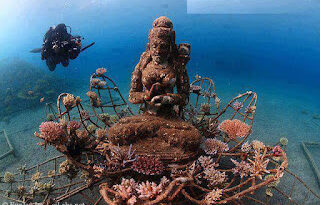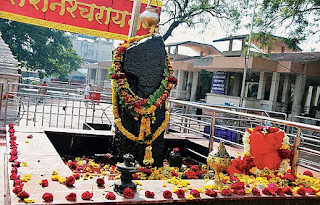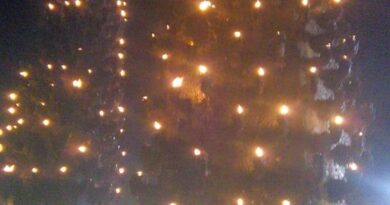Rumtek Buddhist Monastery Gangtok Sikkim
Rumtek is a famous monastery, all over the world, especially among the Tibetan Buddhists Monastery,which is situated near Gangtok, the capital of Sikkim at a distance of 24 kms from Gangtok situated above 5500 sea level. Rangjung Rigpe Dorje was the 16th Karmapa, who arrived in Sikkim in 1959 and chose Rumtek as he felt that this place is blessed by flowing streams, mountains, a snow range in front and a river which are very auspicious, over all other sites, as his main seat in exile when he was forced to leave to India after the Chinese occupied Tibet.
The glory of Rumtek was brought back by him as it was destroyed by the chinese and was originally built by the 9th Karmapa Wangchuk Dorje in 1740 and continued to be the main seat of the Karma Kagyu lineage in Sikkim. The 16th Gyalwa Karmapa,rebuilt the new monastery in 1961 with the help of Sikkim Royal family as well as the Indian Government. The new seat of Monastery was called as, “The Dharmachakra Centre,which includes a beautiful shrine temple and a monastery for the monks and also a place of erudition and spiritual accomplishment, the seat of the glorious Karmapa”on the Tibetan New Year’s day (Losar) in 1966. It has the vision and aspiration of 16th Century Karmapa, Rangjung Rigpe Dorje who built this to establish his seat in exile and to help spread teachings of Buddha throughout the world.
The monastery is also known as “Dharma Chakra Centre” and is surrounded by green, calm and serene hills and one of the most revered monasteries of India after those in Dharamshala and Tawang.The main temple is surrounded by monk’s quarter,which is a four storey structure with a golden sculpture, the ghanzira, adorning the rooftop.
The ghanzira is a combination of five distinct shape representing the five Tathagata (Buddha) families –
Amithaba- the wheel,
Vairochana-the bell,
Amoghasiddhi-the vase,
Akshobya-the vajra,and
Ratnasambhava-the jewel.
Monks are always present in the courtyard of the Rumtek Monastery. The Sanctum Sanctorum situated inside it displays the Golden Stupa along with pictures and statues of Lord Buddha.
Inside of Rumtek Monastery:
The main entrance of the temple is decorated with traditional colourful murals one such is the huge life size images of the Four Guardians of the universe – Virudaka, Virupaksha, Dritarashtra, and Vaishravana – stand guarding the four directions. A painting of a Hindu God(Lord Ganesha) is seen in this Monastery, as it was the vision of the 16th Karmapa in which he saw the elephant headed deity aiding the construction work. One can also have a glimpse of Dalai Lama and Lord Ganesha at the entrance of the Rumtek Monastery which symbolize the linkage between Buddhism and Hinduism. Buddhist school and Nunnery are placed along the monastery wherein religion and culture is preached and taught. The gates of the monastery are manned by soldiers monitoring arrivals because of some strife difference between sects.
Inside the Monastery is seen a ‘Main Shrine Hall’ which was built by strong red pillars with long, round silk banners and ancient thankas suspended from them along with the walls of the hall repleting with paintings of the Kagyu lineage, the Eight Great Bodhisattvas, the Sixteen Arhats and the Genduk Chogngi. One of the highlight of the room is ‘The holy throne of the Gyalwa Karmapa’,which is seen along with the thrones for his regents and other high incarnate tulkus. Behind this is a ten feet large statue of Sakyamuni Buddha along with Shariputra and Mangalputra positioned.The hall also had a large painting of Buddha,which in 1989 while enlarging the hall room was shifted to another location.
The two rooms at right and the main shrine hall are dedicated to the Mahakal and Mahakali. The hall on the left side serve as the gonkhang of the female protector of the Kagyu sect, Tsering Che Nga and fierce manifestation of Guru Padmasambava, Dorje Drolo.
The Monastery Complex:
1)The Karma Shri Nalanda Institute of Buddhist Studies:-It is the most beautiful building of the complex constructed in the year 1984,which attracts numerous students from around the world who spend atleast nine years studying here with an optional three year isolated meditation. The main hall of the institute is on the thrid floor which shows awesome murals along with images of Sakyamuni Buddha and 16th Karmapa.
2)The Golden Stupa:-It is situated Opposite to a small hall which houses the four metre high Golden Stupa containing the ashes of the sixteenth Karmapa ( who died in 1981). Behind which statue of Dorje Chang (Vajradhara)stands in the centre with four great Kagyu teacher – Tilopa, Naropa, Marpa and Milerapa – on his sides. The statues of the previous 16 Karmapa are also seen arranged on the sides of the hall.
This hall is not always open, hence one should make sure that they either knock loudly or take a monk along to get inside.
The original Rumtek gompa which was constructed by the 9th Karmapa in 1740 stands 1/2 km to the new monastery,simple but attractive structure. Highlight of this monastery is the small shrine room devoted to the Karma Kagyu protector Mahakala. The image of the deity is so fierce that it is kept veiled. It is open everyday.
Visiting Hours: 9:00 AM Hours to 6:00 PM
Places to visit in Gangtok:
Gangtok in Sikkim is blessed with innumerable tourist attractions like history buffs, eco-travelers and wanderers from different parts of the world. The hills and lakes come together to form a perfect between the various elements of nature. Some being natural and some manmade they are as follows:
a)Hanuman Tok
b)Saramsa Garden
c)Fambong La Wildlife Sanctuary
d)Do Drul Chorten
e)Enchey Monastery
f)Rumtek Monastery
g)Tashiding Monastery
These monasteries give a perfect insight into Buddhist culture and thereby have attained the status of popular attractions in Gangtok.
Two most scenic and highest mountain lakes in the world are:
a)Tsomgo Lake
b)Gurudongmar Lake
Special Pujas and Festivals Celebrated at Monastery:
1)Losar Festival:-Losar is “Tibetan New Year Festival” and is marked with lot of gaiety, festivity, feasting and merrymaking. It is celebrated in the month of first week of February which is celebrated for either one or two weeks with performances of Ihamo.The monks of the monastery perform a week long puja in honour of Mahakal,before the celebration of Losar.Recently, for the first time in the history of the monastery, the performances of dances were opened for public viewing.
2)The Dungdrub Puja:- It is organised during the fourth Tibetan lunar month with the recitation of one hundred million mantras by the monk community. The recitation begins on the fifteenth day and continues till the final conclusion. The puja is conducted for world peace and to assist people develop tranquility and compassion by embracing Buddha’s teachings.
3)Every alternate year a week-long ‘Vajrakilaya’ (dubchen) or ‘Guru Padmasambhava tsechu puja’ together with traditional chham performances is oraganised during the fourth Tibetan month (May -June).
4)Along with these cultural programmes the Birthday of the 17th Karmapa which falls on June 26 is celebrated every year.
Rigpe Dorje Foundation Main Activities:
Rigpe Dorje Centre welcomes people of all ages and all levels from beginners to advanced practitioners to participate in group sessions. It also provides Individual instruction upon request and specialised in organising three main things such as Meditation, Practice and Instruction.
The foundation schedule consists of chanting and calm abiding practices held as:
On Wednesdays:-Chenrezik, Guru Yoga and Amitabha,
On Saturdays, Sundays and Tuesdays:-Shamatha sitting and walking meditation,
On Sundays:-Green Tara, these can be checked by one in the monthly calendar and also their timings only on this day.
All chanting practices are done in Tibetan with English and French translations included in the texts.
The goal of meditation is to awaken to the true nature of our mind, beyond ignorance and confusion. Meditation also leads to greater focus, stress/anxiety relief and mindfulness.
Other practices scheduled on special days, such as Medicine Buddha, Calling the Lama From Afar, Guru Rinpoche, White Tara and Mahakhala.
1)Shamata– practice of calm abiding,
2)Chenrezik – practice to generate compassion,
3)Green Tara – practice to generate protection,
4)Medicine Buddha – practice to generate well-being,
5)Guru Yoga and Calling the Lama From Afar – practices to generate devotion,
6)White Tara – practice to generate longevity,
7)Mahakala – practice to generate protection,
8)Guru Rinpoche – practice to dispel obstacles,and
9)Amitabha – practice to cut through attachment.
Other Attractions Near Monastery:
1)Namgyal Institute of Tibetology : Located in the town of Gangtok, the The Namgyal Institute of Tibetology is recognised all over the world as reputed centre for Buddhist philosophy and religion. The institute houses priceless collection of old Tibetan books and manuscripts on science, medicine and astrology. There is also a museum attached to the institute that stays open between 10 am to 4pm. It has on displays over 200 icons, old thankas and ritual vessels.
2)Enchey Monastery : One of the most significant monasteries of Sikkim, Enchey monastery is located at a distance of 5 km from Gangtok. The site where the monastery stands was blessed by Lama Druptob Karpo, a tantric master known for his flying powers. The monastery is one of the most important seat Nyingma order and preserves in its precints numerous images of god, goddesses and other religious objects. The ‘Chaam’ or religious masked dance is performed in this monastery every year for two days in the month of January.
How to Reach:
Nearest Airport:- Bagdogra Airport in West Bengal(124 km near Sikkim). Flights form here connect to destinations like Kolkata, Delhi, Guwahati and Patna. Helicopter service to and from Gangtok and Bagdogra are available daily. From Bagdogra airport, taxis are also available to transfer you to Gangtok.
Nearest Railway Station:- Siliguri(114 km) or New Jalpaiguri(134 km). It is well connected to Delhi as well as Kolkata. From New Jalpaiguri, jeeps are available on hire.
Nearest Bus Stand:- NH 31 A connect Kolkata to Gangtok via Teesta Bazaar and Rangpo. SNT (Sikkim National Transport) buses leave Gangtok everyday for Rumtek at 4 pm and return the next morning. Buses from Bagdogra, Darjeeling, Kalimpong and Calcutta are also available with shared jeeps an alternative to reach Rumtek Monastery.
Email id:info@rigpedorjemontreal.org
Address:
Fondation Rigpe Dorje | Rigpe Dorje Foundation
503, 5e Avenue
Verdun (Montréal), QC H4G 2Z2
Métro Verdun


